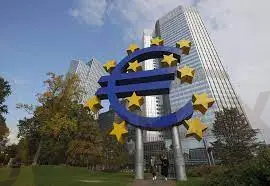简体中文
繁體中文
English
Pусский
日本語
ภาษาไทย
Tiếng Việt
Bahasa Indonesia
Español
हिन्दी
Filippiiniläinen
Français
Deutsch
Português
Türkçe
한국어
العربية
Eurozone HICP Preview: Forecasts from six major banks, not peaking yet
Abstract:The eurozone will release its April Harmonised Index of Consumer Prices (HICP) report on Friday, April 29 at 09:00 GMT and as we closer to the release time, here are the expectations forecast by the economists and researchers of six major banks regarding the upcoming EU inflation print.

Expectations are for HICP to rise further to 7.5% YoY in April (prev. 7.4%), with the core metric (ex-food and energy) seen rising to 3.3% YoY (prev. 3.2%).
Commerzbank
“The inflation rate in the euro area is expected to remain unchanged at 7.4% in April. Oil and gas prices have fallen again somewhat after the dramatic increase in March, and some countries are relieving consumers with discounts at the pump station or tax cuts. Therefore, consumer prices for energy in April are likely to have risen somewhat less YoY than in the month before. However, the rise in energy prices is increasingly reflected in the prices of other goods. In addition, the renewed lockdowns of megacities in China are exacerbating global supply problems and driving up the cost of intermediate goods. Accordingly, the core inflation rate is likely to have risen from 2.9% to 3.4% in April. The inflation rate in the euro area is not expected to fall sustainably until the summer, provided that energy prices start to fall again as we expect. However, the underlying upward pressure on prices will probably continue to strengthen.”
Danske Bank
“Inflation risks remain skewed to the upside despite the latest stabilization in oil, gas and electricity prices. We look for a further climb in the headline HICP rate above 8%, with core inflation remaining elevated at 3.1%, keeping the pressure high on ECB to proceed with its policy normalisation.”
ING
“The eurozone is anxiously awaiting the next inflation figure, which will no doubt be above 7% again. The question is mainly whether it is again higher than the 7.5% seen in March or whether the decline in oil and gas prices since early March has translated into a small drop in headline inflation. We expect the former to be the case, also because of second-round effects from energy prices on core inflation.”
SocGen
“After nine months of consecutive increases, we expect HICP to fall by 0.1pp to 7.3% in April. Conversely, we think core inflation will continue to accelerate to 3.3% YoY, up from 2.9% in March.”
Nomura
“We forecast only a small further rise in euro area HICP inflation in April to 7.6%, with lower fuel prices (petrol prices fell during the month as oil prices dropped) counteracting somewhat our assumption of a rise in core inflation.”
Citibank
“Energy price likely dropped sharply in April and while the peak in energy inflation may be behind, we still expect strong MM prints for food HICP and non-energy goods. Domestically-generated services inflation to remain subdued but overall, headline inflation should tick higher to 7.6% and core to 3.4% YoY.”

Disclaimer:
The views in this article only represent the author's personal views, and do not constitute investment advice on this platform. This platform does not guarantee the accuracy, completeness and timeliness of the information in the article, and will not be liable for any loss caused by the use of or reliance on the information in the article.
Read more

Top 10 Trading Indicators Every Forex Trader Should Know
Master the top 10 Forex trading indicators to analyze real-time Forex quotes, trends, and market signals. Learn strategies to boost accuracy and avoid mistakes.

Geopolitical Events: What They Are & Their Impact?
You've heard many times that geopolitical events have a significant impact on the Forex market. But do you know what geopolitical events are and how they affect the FX market? Let us learn about it today.

Why Do You Feel Scared During Trade Execution?
Trade execution is a pivotal moment for traders. It is when analysis turns into action, and potential profits or losses become reality. However, for many traders, this moment is accompanied by fear. Why does this happen, and how can you address it?

WikiEXPO Global Expert Interview: Simone Martin—— Exploring Financial Regulation Change
In the midst of financial innovation and regulation, WikiGlobal, the organizer of WikiEXPO, stays abreast of industry trends and conducts a series of insightful and distinctive interviews on pivotal topics. We are delighted to have the privilege of inviting Simone Martin for an in-depth conversation this time.
WikiFX Broker
Latest News
Geopolitical Events: What They Are & Their Impact?
Volkswagen agrees deal to avoid Germany plant closures
Top 10 Trading Indicators Every Forex Trader Should Know
TradingView Launches Liquidity Analysis Tool DEX Screener
MultiBank Group Wins Big at Traders Fair Hong Kong 2024
WikiEXPO Global Expert Interview: Simone Martin—— Exploring Financial Regulation Change
'Young investors make investment decisions impulsively to keep up with current trends' FCA Reveals
Why Do You Feel Scared During Trade Execution?
CySEC Settles Compliance Case with Fxview Operator Charlgate Ltd
Malaysian Influencer Detained in Taiwan Over Alleged Role in Fraud Scheme
Currency Calculator


